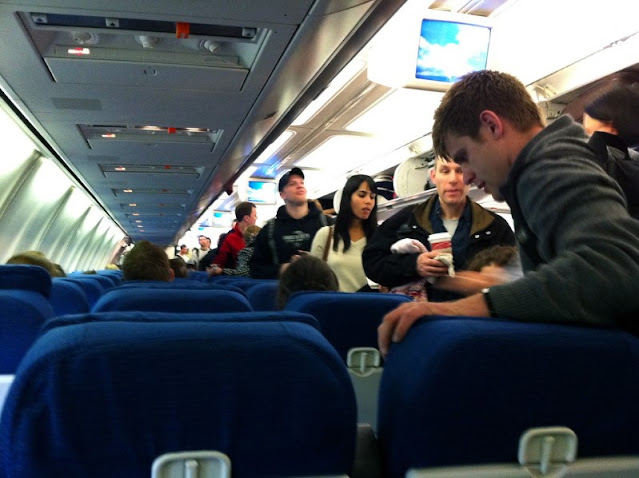American Airlines Passenger Obese
Addressing Obesity Concerns for American Airlines Passengers
Obesity is a prevalent health issue in the United States, affecting millions nationwide. It's a condition that comes with many challenges; for some, air travel can be particularly daunting.
American Airlines, one of the largest carriers in the U.S., has been in the spotlight concerning how it accommodates passengers who are obese. This article explores the various aspects of this issue, from the challenges faced by obese passengers to the efforts made by American Airlines to ensure a comfortable and equitable flying experience for all.
 |
| Illustration Airlines Passenger |
The Challenges Faced by Obese Passengers
Obesity is a complex health issue that can significantly impact various aspects of a person's life, including travel. Obese passengers may encounter several challenges when flying, such as:
- Seat Size: One of the primary concerns for obese passengers is the size of airline seats. Standard airplane seats are designed for passengers of average size, and individuals with larger bodies may find them uncomfortable or even inaccessible.
- Belt Extenders: Obese passengers often require seat belt extenders to secure themselves during the flight. However, the availability of these extenders can be inconsistent, leading to discomfort and embarrassment.
- Stigmatization: Obese passengers can face discrimination and stigmatization from fellow travelers or airline staff, making the flying experience emotionally distressing.
- Limited Mobility: Obesity can also affect a person's mobility, making it challenging to navigate an aircraft's narrow aisles and cramped spaces.
- American Airlines Approach to Accommodating Obese Passengers
- American Airlines acknowledges the challenges faced by obese passengers and has taken steps to address these issues:
- Wider Seats: The airline has introduced premium seating options with wider seats to provide additional space and comfort for passengers who require it.
- Seat Belt Extenders: American Airlines ensures that seat belt extenders are available on all flights, eliminating the inconvenience of requesting one.
- Customer Support: The airline offers customer support to assist passengers with special requirements, including those related to obesity. Passengers can contact the airline in advance to discuss their needs and receive guidance.
- Anti-Discrimination Policies: American Airlines has strict anti-discrimination policies to ensure all passengers are treated with respect and dignity. Discrimination against passengers based on their size is not tolerated.
Improving the Travel Experience for Obese Passengers
While American Airlines has tried to accommodate obese passengers, there is room for improvement in the aviation industry. Here are some suggestions for making air travel more comfortable and accessible for individuals with obesity:
- Standardized Seat Sizes: Airlines could offer a range of seat sizes to accommodate passengers of different body types. This would provide a more inclusive flying experience for everyone.
- Education and Training: Airlines should continue to educate their staff on interacting respectfully and empathetically with passengers of all sizes. Training programs can help reduce stigmatization and discrimination.
- In-Flight Amenities: Offering amenities such as adjustable armrests and more spacious restrooms can enhance the overall travel experience for obese passengers.
- Collaboration with Healthcare Professionals: Airlines can collaborate with healthcare professionals to develop guidelines and recommendations for obese passengers, ensuring their safety and comfort during flights.
Conclusion
Obesity is a complex and multifaceted health issue, and its impact on air travel cannot be ignored. American Airlines has made commendable efforts to accommodate obese passengers and ensure their comfort and dignity while flying.
However, addressing this issue requires a collective effort from the entire aviation industry. By continuing to work toward more inclusive and compassionate travel experiences, airlines can make air travel a more equitable and enjoyable experience for passengers of all body types.